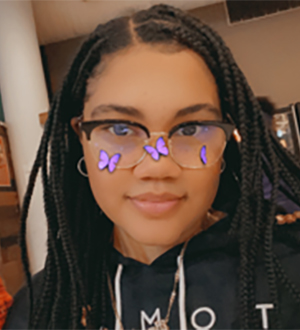Weekly Responses
Post your weekly responses here.
Topic: Egypt
Due: Sun Sep 22
Prompt: What do you these images suggest to you about the ancient Egyptians?
Take a close look at these images from ancient Egypt. (You can click on the image to open it in a new window.)
Egypt Nobleman and his wife, Egypt, Old Kingdom.
5th Dynasty, 2494-2345 BCE.
Egypt Colossal statues of Old Kingdom pharaohs at Luxor, capital city of Upper Egypt.
Egypt Seated Statue of the female pharaoh Hatshepsut.
ca. 1479–1458 BCE.
Egypt A detail from the throne of Tutankhamun which shows the pharaoh with his wife Ankhsenamun.
ca. 1327 BCE, National Museum, Cairo.
Egypt Bust of Nefertiti, the Great Royal Wife of Egyptian pharaoh Akhenaten
1345 BCE.
Egypt Queen Nefertiti (right) being guided into the afterlife by Isis and Horus (center) and welcomed by Maat (left), goddess of balance and order.
Tomb of Nefertiti, ca. 1255 BCE.
Egypt Egyptian tomb painting of Anubis assisting the dead.
For your online response this week, choose one image. Focus on the image you’re most interested in and write a post that includes the following:
- What detail in particular jumps out at you as you look at this image?
- What do you think the artist was trying to communicate?
- What would you like to find out more about?
Responses for Week 4
Egypt
 Albert Romero
443
Albert Romero
443
2024-09-26 12:25:28
- What detail in particular jumps out at you as you look at this image?
The last painting stook most out to me. And how the man is presumably dead and presumably a pagan god is assisting him while he is already dead.
- What do you think the artist was trying to communicate?
What i think the artist was trying to communicate is how once an Egyptian dies. The pagan gods they serve will help them, take them to the afterlife. But in this picture it almost seems how the god is trying to take care of the Egyptians body, almost trying to preserve it even though its a tomb. Almost like this god is trying to take care of its body as one takes care of a kid lying in bed from a fever. All i could interpret is that the pagan gods are there to preserve our body to take us in the next step of the cycle of life as that was their belief during their time.
- What would you like to find out more about?
I would love to find out why and who are exactly these gods. What are their roles, and how else do they affect society?
Week 4: Egypt
 Emily M Ulloa
436
Emily M Ulloa
436
2024-09-23 00:51:21
- What detail in particular jumps out at you as you look at this image?
The image that jumped out to me the most was the Egyptian tomb painting of Anubis assisting the dead. As I was looking at the image before reading the description, it looked like the person laying down was still alive and scared while the animal/human on top is trying to feast out of him. But then I looked at the painting again and realized the rest of the body is gone. I also noticed that Anubis placed his hands on his chest as it signifies protection and connection.
- What do you think the artist was trying to communicate?
The imagine was trying to communicate that Anubis was one of many powerful gods and how much he has gained respect from all the Egyptians. Anubis is also the protector of people that died, the black wolf Anubis will roam around the Egyptians tomb to protect them. Anubis started the mummification process of the Egyptians which makes him so powerful and good.
- What would you like to find out more about?
I would like to find out more in details what do the Egyptians that are alive do to Anubis when he's roaming around the Egyptian tomb assisting the death. I also will like to find out what causes Anubis to start the mummification process.
Week 4: Egypt
 Johana Funes
434
Johana Funes
434
2024-09-22 23:19:28
The image I've chosen is the second to last image in the lineup. The image as described is of Queen Nefertiti being guided into the afterlife by Isis and Horas and welcomed by Maat goddess of balance and order at the Tomb of Nefertiti, ca. 1255 BCE.
After observing, the symbols in the background of the image stand out, alongside, the open arms of Maat and the holding hands of Isis and Horas. Interestingly enough Isis is front and center, then is Horus followed by Nefertiti. I assume the artist at the time was portraying how Nefertiti was with their god's grace passed into the afterlife.
Isis being the goddess of motherhood stood for Nefertiti's fertile life, providing many sons and daughters.
While Horus the god of sun and sky, protection and healing, guides Nefertiti into a new stage or dimension. From the living and physical, Horus hands her other to the afterlife where Maat is awaiting open arms.
Maat stands for balance and order so from the context given I would like to assume that in the afterlife balance and order are found. Seeing Maat at the end of the journey of living is not just a good sign but a sign of stability.
I'm curious to know the translations of the hieroglyphics. Is it just a description?
Week 4
 Diomedes Sena
429
Diomedes Sena
429
2024-09-22 22:29:16
The image that I chose was that of the colossal statues of Old Kingdom Pharaohs at Luxor. The one detail that jumps out to me the most was the both the size and the adornments of the statues. The Pharaohs are not only huge but their royal garnments are also carved unto the stone. It’s also not unique to each pharaoh as it seems that all the pharaohs are carved this way.
I believe these two details are very important as they convey how the people viewed the pharaohs. The size seems to indicate that they were seen as larger than life, as like gods. This fact further proven by the carving of their royal garnments, to emphasize their title and stature. It would seem that whoever carved these statues, wanted to make sure that you knew you were looking at a king AND a god.
The one thing I would like to know is where were these statues placed? I would assume a tomb but to put two king/gods next to eachother would indicate some sort of shrine to the past (almost like a museum).
Week 4 Response
 Amanda Isaac
427
Amanda Isaac
427
2024-09-22 22:06:47
- · I chose the image of Queen Nefertiti being guided into the afterlife welcomed by Maat a goddess of balance and order.
- A detail that jumps out to me while I look at this image is the goddess Maat has wings and that these wings are not particularly angelic but, more so resembling an actual birds wings. After the discussion we had in class about animals and their connection to gods and the afterlife, and the rawness and power that they carry with them this detail really jumped out at me.
- I think that the artist of this image was trying to communicate the importance of having a god's acceptance into the afterlife to the Egyptians. For someone as important as the Queen making sure that a proper send-off into the afterlife was necessary so having a tie to the gods was important.
- In the image there are symbols surroundings the queen. Knowing that this was their form of communication, i would like to know what the symbols represent and what was there message, was it something done particularly for the send off?
Week 4
 Thierno Bah
420
Thierno Bah
420
2024-09-22 19:25:58
Image : Colossal statues of Old Kingdom pharaohs at Luxor, capital city of Upper Egypt.
- In the image, the detail in particular that jumped out at me is the occurrence of the dramatic light effect on the statues which gives a nice warmth golden color to the left statue and a nice cooler bluish-purple tone on the right statue. This in some way enhances the ancient Egyptian emblems in a very dramatic and noble manner that draws filters of its greatness from the Luxor temple or any other ancient Egyptian relic. Likewise, the embellishments of the head crown of the Pharaoh and the post with intricate symbols of the language cultivate the attentiveness to the detail and the importance of the atmosphere.
- I believe the artist seeks to convey the beauty and eternality of the civilization of ancient Egypt. With the use of the left warm golden and the right cool blue tones the artist may be illustrating the life and death conditions, day and night cycles, or divine protection: the mortal realm, which is a recurrent idea in ancient Egyptian art and architecture. An absence of light may equally be used to depict the degree of spirituality and physicality. These giant sculptures echo the lasting authority of the Pharaoh’s rule that fused with the deities. The impression or feeling that the artist wished to elicit was also that of admiration for these ancient leaders and of the mythical and gigantic proportions of the temples of Egypt, especially in a place like Luxor which is cherished for its symbolic connotations. This image perhaps could make the audiences think about how these buildings are so much infused with history and culture.
- I would be very interested in learning more about specific symbolism-in the use of light here and how, in general, ancient Egyptians employed light and shadow in their architectural and statue architecture in the conveyance of messages important on a religious or cultural level. I also want to understand the concrete pharaohs or gods these statues represent in Luxor: how such figures had been venerated within ancient Egyptian society. Interesting is the understanding of the historical meaning of the Luxor Temple itself: to what purpose it served during the religious ceremonies, which gods it was devoted to, and how it has been preserved.
Week 4 Response
 Collin Underhill
418
Collin Underhill
418
2024-09-22 18:26:43
When looking at the image of King Tutankhamun and his wife Ankhsenamun the bright colors stood out to me most. It is very detailed and colorful. In making this art work so colorful, I think that the artist is trying to emphasize the pharaoh's wealth and status. In the artwork, he and his wife are clothed in lots of jewelry and garments that really stand out. I would like to find out more about the artist. What other art did they create? Was all of their art related to the pharaoh? Was the artist hired by the pharaoh to make the artwork or did he just make it?
Week 4
 Gabriel Sarfo Arful
412
Gabriel Sarfo Arful
412
2024-09-22 17:28:56
- What detail in particular jumps out at you as you look at this image?
The image that fascinates me is the Egyptian tomb painting of Anubis assisting the dead, and it shows how the Egyptians portray Anubis as a protector and guide for the dead to the afterlife. This shows Egyptians cared deeply about their people even after they died, they believed their gods would take care of the dead ones in the afterlife. Anubis gave the people hope that the bodies of the dead would be protected and respected and their souls would be guided until they were fairly judged. This demonstrates to me that the Egyptians have a very personal attachment to death, and they deal with it with great care and respect, believing that the gods have the same regard for the deceased.
- What do you think the artist was trying to communicate?
I believe the artist showed the lives of pharaohs and their mummification process where Anubis' responsibility was to carry the soul into the afterlife ensuring guidance.
- What would you like to find out more about?
I would like to find out more about other gods that ensure safety and care about people like Anubis.
Week 4-Tomb of Nefertiti, ca. 1255 BCE
 Amanda Guzman
410
Amanda Guzman
410
2024-09-22 14:12:30
1.What detail in particular jumps out at you as you look at this image?
The image that I choose to analyze for this week’s discussion is the tomb of Nefertiti, the detail that stood out to me in this image is how Horus is holding Nefertiti's hand to guide her into the afterlife. In my opinion this shows how much trust Egyptians had in their gods and the harmony they had in their relationship that they were willing to be guided in such a manner. Also another detail that stood out to me was how Horus had a falcon head rather than a human face like the other gods in the picture.
2.What do you think the artist was trying to communicate?
I think the author was trying to convey the relationship that the Egyptians had with their gods and how benevolent and trustworthy their gods were. Also I believe the author was trying to depict what Egyptians believe about the afterlife or what the process to the afterlife is like.
3.What would you like to find out more about?
I would like to learn more about Egyptians views on the afterlife and what they believe occurs when they the afterlife, also whether they place more importance on life itself or on what comes after life has reached its ends.
Week 4 - Images of Ancient Egypt - The Guidance Of Nefertiti!
 Abigail Pokua Amankwatia
407
Abigail Pokua Amankwatia
407
2024-09-21 23:43:38
The image that I have decided to analyze would be The Guidance of Nefertiti, though lacking an official title; the imagery truly resonates with me with the striking portrait of the queen and the divine connections that follows.
What detail in particular jumps out at you as you look at this image?
The particular detail that jumps at me is the calmness that all the figures have on their facial features, as if they are use to such an event happening or that they knew this time would eventually come. I love the factor that Horus is holding Nefertiti’s hand and there is no fear or shame, but she is content with the life she has lived. Along with the other womanly gods who are in fact there to do the same and welcome her for all she has done.
What do you think the artist was trying to communicate?
I believe the artist was trying to communicate the acts of the Gods when it comes to the death of a pharaoh (whether woman or man) within that position, all who die - have to have the same Gods to look after them in the sake of their journey towards the afterlife. Possibility for other pharaohs to look up on the said image and know that there should be no rush in their life or fear of their death for the Gods will always be with them.
What would you like to find out more about?
I would like to find out if all the Gods of the Egyptian timing had the assistance in aiding with the afterlife (instead of just Anubis). Or even how was the afterlife for them? What is it like a limbo? Did they see their loved ones? Was it foggy? Was it nightmare-like or very similar to a dream?
Bust of Nefertiti, the Great Royal Wife of Egyptian pharaoh Akhenaten
 Khadim Gueye
406
Khadim Gueye
406
2024-09-21 22:11:39
I'll focus on the Bust of Nefertiti, one of the most iconic pieces from ancient Egypt. The striking detail that stands out immediately is the exquisite craftsmanship of her elongated neck and perfectly symmetrical features, especially the sharp contours of her cheekbones and her serene expression. The vivid blue crown adds a strong contrast against the natural skin tones, making her appear both regal and approachable.
I believe the artist was emphasizing Nefertiti’s divine beauty and elegance, portraying her as an idealized figure of royal and divine femininity. Her symmetrical features, the softness in her face, and the boldness of the crown all suggest the artist intended to communicate her power and grace as a queen, as well as her connection to the gods. It’s a deliberate celebration of her status, likely reflecting her significant role not just as a royal consort but as a powerful figure in her own right.
What I’d like to explore further is how this depiction of Nefertiti fits into the broader context of her time, especially considering her influence during the reign of Akhenaten and the period of religious transformation in ancient Egypt. How did this representation of beauty and power align with the cultural and political shifts during her life?
Response for Week 4
 Abubakari Yatabare
405
Abubakari Yatabare
405
2024-09-21 22:01:50
Egyptian tomb painting of Anubis assisting the dead.
The image I pick depicts a painting of the Egyptian God of the Dead meticulously caring for the a deceased person. Something that jumped out to me is how Anubis is caring for the body and has a direct hand in watching over the dead unlike other mythologies were the god of the death is just a watcher of them he doesnt get his ahdn dirty taking care of them. What this shows me is that the Egyptians and their relationship with death is very personal and they treat it with deep care and respect and they believe the gods hold the same care and respect over the dead. I would like to find out more of the mummization process like how did It work.
Response Week 4
 Benjamin Yang
401
Benjamin Yang
401
2024-09-21 21:21:19
In the image of King Tutankhamun and his wife Ankhsenamun (ca. 1312 BCE), one detail that I notice is that a vast array of historically vibrant and symbolically regal colors are used. Some of these colors include blue (which is rarely found naturally), gold (which not only represents riches but also was believed to be the literal flesh of gods), and bright red for their skin (which could represent blood or life). Throughout human history, colors have been a universal symbol of concepts that humans associate them with, an example being that green generally conveys rebirth as vegetation grows from their own dead.
The choice of using these colors when crafting an image on the side of the king’s throne could indicate that the artist intended to exacerbate King Tut’s regality and legacy as much as possible. This would not only allow the king’s life to remain in some physical form, but with the most appealing colors known to man at the time. For a culture with beliefs deeply rooted in the concept that rulers were descendants of gods, it would be vital to maintain this belief to anyone who came across Egyptian architecture or invention. On top of this, the overall rule of Egyptian kings and queens have become increasingly shorter due to genetic malfunctions caused by inbreeding. Due to this, King Tut would die in his teenage years and thereby increase the necessity to extravagant his already short life.
If possible, I’d like to find out what Tutankhamun and Ankhsenamun were exactly doing in this depiction of them. Visually Tutankhamun is sitting on a throne while his wife has one hand on his shoulder and the left hand open to him with the palm facing up. There is also a blue trapezoid on the underside of her left hand, which could be a ring of some kind. I don’t believe that Ankhsenamun is giving anything to him, so perhaps she’s just gesturing with her hand as she explains something to her husband. Either way, there must be a reason why this specific scene was desired in a visual depiction, and on the king’s throne no less.
Tomb of Nefertiti, ca. 1255 BCE.
 Shafwan Ibn Majid
398
Shafwan Ibn Majid
398
2024-09-21 17:02:46
What detail in particular jumps out at you as you look at this image?
A detail in particular jumps out at me as I look at this image of Tomb of Nefertiti, ca. 1255 BCE is that they have servants.
What do you think the artist was trying to communicate?
I think the artist was trying to communicate that the servants are dress like this.
What would you like to find out more about?
I would like to find out more about why they dress like that.
Response for Week 4
 Marielle Matingou
397
Marielle Matingou
397
2024-09-21 16:17:06
The captivating image of a nobleman and his wife from Ancient Egypt's Old Kingdom period
(2613-2181 BCE) presents a poignant glimpse into the lives of the elite during this era of grandeur. This exquisite representation, likely crafted by skilled artisans, embodies the essence of Ancient Egyptian artistry and offers insights into the social hierarchy,
cultural values, and marital relationships of the time.
Composition and Symbolism
The couple is depicted standing side by side, conveying a sense of unity and harmony. The nobleman, dressed in a flowing white robe, exudes confidence and authority, while his wife, adorned in elegant jewelry and a intricately pleated dress, radiates refinement and poise. The juxtaposition of their attire highlights the distinct roles and expectations placed upon men and women within Ancient Egyptian society.
Response Week 4
 Liam McNamara
395
Liam McNamara
395
2024-09-21 12:56:41
A detail in particular that jumps out at me is how Anubis is portrayed in the image as well as in mythology. In many other religions and cultures where a god of death is present often times that god is feared or seen as a dark and scary figure however Anubis is different. In Egyptian mythology Anubis is the guide of the dead who is said to guide the soul and weigh the heart of the deceased to see if their soul could pass into the afterlife. Anubis is also an embalmer and protector of graves.
I think that the artist was trying to communicate the love of the gods as in the image Anubis is seen assisting the dead, part of an important task in order to bring the soul to the afterlife. He is also known as an embalmer in the image he could possibly be helping with the process of mummification depending on the time period and the importance of the person. I think this communicates the fact that the Egyptians had total faith in their gods as he is shown helping not harming.
I would like to find more out about the social structures of Egypt as well as more mythology.
Response for Week 4
 Joselyne Bello Arellano
394
Joselyne Bello Arellano
394
2024-09-20 17:13:51
- Something that caught my eye when looking at image 6 of the queen Nefertiti being guided into the afterlife by Isis and Horus and then being welcomed by Maat , goddess of balance and order. The wings on the queen is what caught my eye the most, I feel like that would represent her fly to the afterlife.
- I think that the artist is demonstrating the process of the Pharaohs going from the living world to the after world. And showing what kind of happens.
- What I would like to find out more about is the meaning of the pictures in the back and why are there so many birds in that description. Or is that the ritual verse they would say?
Topic: Egypt
 Iryna Tomarova
393
Iryna Tomarova
393
2024-09-20 16:23:51
First of all, looking at all these images I’m pleasantly surprised by the role of women in the Egyptian society. The pictures show us that males and females are mostly equal, women are not only a symbol of fertility, future, and private life, but they could even rule the country.
What detail in particular jumps out at you as you look at this image?
The picture from the Tomb of Nefertiti tells us the story of Nefertiti’s death. Gods guide her to the afterlife. The pharaoh is depicted with the gods as equal, from the first sight you can’t really figure out who is who.
What do you think the artist was trying to communicate?
The artist is trying to show us how pharaohs reach the afterlife. Nefertiti stretches her hands out to the gods. She invites them or asks them for something. Gods look at her, they are ready to accept her in their immortal world.
What would you like to find out more about?
What do the wings represent in the picture? Is it a part of her royal robe, or is it a sign that she is going to “heaven”? How do Egyptians make their paints? Why do these gods guide Nefertiti, and not Anubis or Osiris? Does the fact that Nefertiti looks bigger and taller in the picture represent something?
Week 4
 Zacharie Boutoille
392
Zacharie Boutoille
392
2024-09-20 12:49:04
The Tomb of Nefertiti
- What detail in particular jumps out at you as you look at this image?
The complexity of the painting was what caught my eye. It is quite a scene being shown, the Queen is being guided by gods and brought in front of Maat the god of balance and order. I like the ornate details of the figures and the descriptions that appear above them in Hieroglyphics.
- What do you think the artist was trying to communicate?
I believe the artist was trying to show the afterlife and the complexities of said afterlife. The concept of being brought to the god of order and balance after death is interesting.
- What would you like to find out more about?
I would like to know what the hieroglyphs above the characters actually say. I would also like to know where the physical depictions come from. For example, why does Maat have wings, and why does Horus have the head of a bird?
Week 4 Response
 Siwani Gurung
389
Siwani Gurung
389
2024-09-19 16:06:04
Egyptian tomb painting of Anubis assisting the dead.
- What detail in particular jumps out at you as you look at this image?
The most interesting detail to me is the detail and beauty of the sarcophagus. It is clear that the Egyptians took time to work on the coffins of their rulers, as their posthumous provisions mattered significantly for their afterlives.
- What do you think the artist was trying to communicate?
I feel like the detail reflects how much effort they would put in for the Pharaohs, who were literally Gods to the people. The combination of multi-color patterns, attention to the makeup to make the face beautiful, and the general facial detail not only shows how important the conservation of the body was in the afterlife but also how carefully the people looked after their ruler after they died. Pharaohs were Gods who looked after their people, so in a way, this can be seen as their payback. Anubis also tending to the dead shows that the people believed that their Gods were benevolent and helped the passed proceed through the afterlife.
- What would you like to find out more about?
I find the Egyptian Gods really interesting because of their specific purposes, but also how they were imagined, especially the ones with animal features such as Anubis in this painting.
Response week 4
 [Former classmate]
387
[Former classmate]
387
2024-09-18 20:58:39
1. What detail particularly jumps out as you look at the image?
• The most striking detail is the composition and use of color. It immediately draws attention to the central figure and the emotions it evokes, making the viewer focus on the intensity or subtlety of the scene.
2. What do you think the artist was trying to communicate?
• The artist might be trying express a sense of emotion or narrative, such as struggle, hope, or reflection. The mood conveyed by the colors and figure placement suggests a deeper message about human experience or a personal journey.
3. What would you like to find out more about?
• I’d like to explore the context in which the artwork was created, including the artist’s background and motivations. Understanding the historical or cultural influences on the piece would provide a richer perspective on its meanig.
Bust of Nefertiti
 Rachid Cherif
386
Rachid Cherif
386
2024-09-18 17:35:50
1) Looking at the Bust of Nefertiti, one detail that immediately jumps out is the intricate detailing of her crown. The crown is tall, smooth, and balanced , emphasizing her royal stature and possibly signifying a connection to both political authority and religious symbolism. The rich colors, including the deep blue of the crown and the subtle accents on her collar, also draw attention to her elegance and importance.
2) In my opinion the artist appears to be communicating Nefertiti's status as a figure of power, grace, and divine beauty. Her perfectly symmetrical face, the serene expression, and the smooth contours of her features suggest that she was not just a queen but a symbol of an idealized feminine form. Her gaze, forward and calm, conveys confidence and authority.
3) I’d like to learn more about how Nefertiti influenced Egyptian society during her time as queen, particularly her role in the religious revolution that saw the worship of Aten, the sun disc, as the central deity. Additionally, understanding the cultural significance of her distinctive crown and its role in royal iconography would provide deeper insight into the importance of this sculpture.
week 4
 Ivania Posada Coreas
384
Ivania Posada Coreas
384
2024-09-17 21:40:10
- What detail jumps out at you as you look at this image?
A detail in particular that jumped out at me as I was looking at this image is Queen Nefertiti being guided into the afterlife. Also, the last image is an Egyptian tomb painting of Anubis the dead, which I think would be a ritual after death.
- What do you think the artist was trying to communicate?
I think the artist was trying to communicate their importance or how they were treated, or it may be a message about the afterlife.
- What would you like to find out more about?
I would like to find out more about their culture and how Egyptian rituals were related to time.
Week 4 Response
 Zuleyaime LaGuerre
383
Zuleyaime LaGuerre
383
2024-09-17 15:42:57
The thing about this image that stood out to me most was the carving on the pillar, which seemed to portray a message or story of some kind. I believe the artist could have been conveying that the pharaohs were seen as gods of some kind or even messengers of the gods as we can somewhat see a pharaoh taking to a figure that is not fully shown, this could be one of the gods. I would love to be able to see more of the pillar to give a bit of a clearer meaning as well as a better view of the wall since they seem to have images and hieroglyphics that could explain more.
Response for Week 4
 [Former classmate]
381
[Former classmate]
381
2024-09-17 14:44:13
- What I particular jumps out to you as you look at this image?
Something that stood out to me was they women were glorified in these images. There is a lot of detail in the way the wives look. I also noticed that a lot of the men in these images are with their wives.
- What do you think the author was trying to communicate?
I believe the author was trying to emphasize the importance of women in this civilization. They were treated and valued highly.
- What would you like to fin out more about?
I would like to find out more about the culture and traditions in Egypt.
Response Week 4
 Liam McNamara
380
Liam McNamara
380
2024-09-17 12:51:03
- What detail in particular jumps out at you as you look at this image?
A detail that I find very interesting is from the Egyptian image depicting a person with a Anubis mask preparing a sarcophagus. What I find really interesting is that Anubis is a god of death he is said to guide the souls to the spirit world so I find that image especially interesting as a sarcophagus is a type of burial.
- What do you think the artist was trying to communicate?
I think the artist was trying to communicate the importance of the person as sarcophagus's are often a sign of nobility and for the specific death being recorded and if not I believe it has more to do with the importance of Anubis. In the description of the image it say's Anubis helping the dead which does make sense with his role as unlike other gods of death. He is not the bringer of death but rather the guide of the soul.
- What would you like to find out more about?
I would like to find more about Egyptian mythology as I find it quite interesting as well as Egypt in general as I find it very interesting that it was able to flourish for so long.